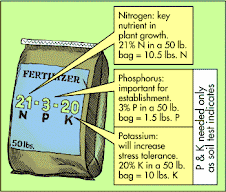 Poinsettias are vibrant plants to display at Christmas. As a centerpiece on a dinner table, in a basket on the floor, or in a grouping on a coffee table they make a dramatic display. They can be lovely grouped in an unused fireplace or sitting on a table or chair in a foyer. For the price, they pack a lot of color and decorating impact. Paired with pinecones and ever-greenery, poinsettias make not only a holiday display but also look festive all winter. Striking as always in deep red, poinsettias are now available in pink, creamy white and or coated with glitter or powder to look like snow. Sometimes they are even mixed in with other houseplants, all in one container. When potted as a single plant they usually are sold with a plastic foil wrap around the pot. When bringing it home from a store, keep the plant itself covered to protect it from cold. Poinsettias are semi-tropical plants and don’t like temperatures below 55 degrees. Below that temperature they will drop their leaves.
Poinsettias are vibrant plants to display at Christmas. As a centerpiece on a dinner table, in a basket on the floor, or in a grouping on a coffee table they make a dramatic display. They can be lovely grouped in an unused fireplace or sitting on a table or chair in a foyer. For the price, they pack a lot of color and decorating impact. Paired with pinecones and ever-greenery, poinsettias make not only a holiday display but also look festive all winter. Striking as always in deep red, poinsettias are now available in pink, creamy white and or coated with glitter or powder to look like snow. Sometimes they are even mixed in with other houseplants, all in one container. When potted as a single plant they usually are sold with a plastic foil wrap around the pot. When bringing it home from a store, keep the plant itself covered to protect it from cold. Poinsettias are semi-tropical plants and don’t like temperatures below 55 degrees. Below that temperature they will drop their leaves.With proper care a poinsettia will keep its colorful bracts, the red leaves that give it color, for months. When purchasing, look for healthy plants, avoiding plants with curled leaves or browned leaf tips. Water the plant when the first two inches of soil is dry. Don’t let the pot sit in water, especially in plastic foil. Un-drained, it will quickly develop root rot. But if it dries enough to curl the leaves, quite a few leaves and bracts will drop off. Fertilize with houseplant fertilizer after the first month, fertilizing every two weeks thereafter. Keep in a very sunny location for at least six hours a day. Low light will also cause leaf drop. Keep from cold drafts or touching cold windows.
Poinsettias are not poisonous to people or pets, although this is a popularly held notion. Careful testing by Extension Services has demonstrated that eating poinsettia might upset the stomach but it is not poisonous.
Who has not seen a pitiful, leggy poinsettia in early February, with most of its leaves dropped? The plant has either been under or over-watered or not given enough light. It can be trimmed back and resurrected by the care described above. Poinsettias grow year round in Florida and further south and will grow outside in pots in Kentucky over the summer. They will get three to four feet tall if repotted and will continue to bloom. Bring them indoors in September. Continue fertilizing and watering the plant and it will reward you with its vivid colors for as long as you wish to keep it.






